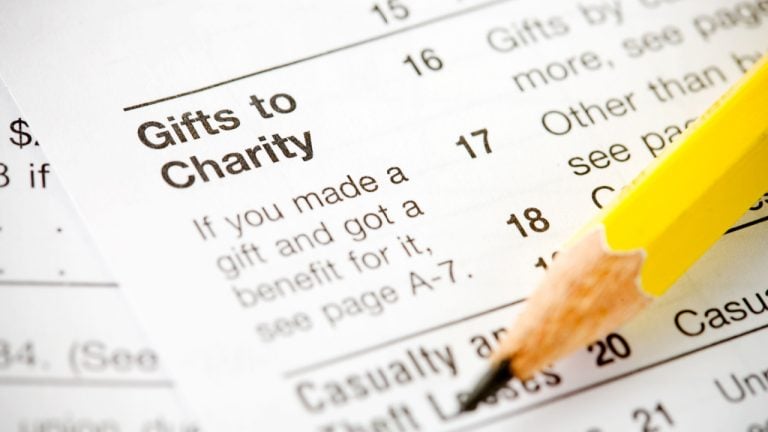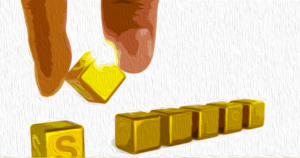
Embrace Year-End Tax Strategy With a Charitable Giving Twist
As the year comes to a close, cryptocurrency investors have the opportunity to optimize their tax benefits while supporting worthy causes by combining tax-loss harvesting with cryptocurrency donations to charities.
The Concept of Tax-Loss Harvesting in Crypto
Tax-loss harvesting in the crypto realm involves selling digital assets at a loss to offset capital gains taxes. This strategy can be particularly advantageous given the volatility and potential price fluctuations in the crypto market. In the United States, investors can offset capital gains or reduce ordinary income by up to $3,000 annually, with the ability to carry forward any additional losses.
The Benefits of Charitable Contributions in Cryptocurrency
Donating bitcoin (BTC) and other cryptocurrencies to charities has emerged as a tax-efficient method of supporting philanthropic causes. The IRS classifies cryptocurrency as property, which means that donations can be tax-deductible to the fullest extent permitted by law. By donating cryptocurrency directly to a charity, donors can potentially avoid capital gains taxes that would be incurred if the crypto were sold and then donated in cash. Additionally, donors can typically deduct the fair market value of the crypto at the time of donation.
The Role of Organizations like The Giving Block
Organizations like The Giving Block are leading the way in facilitating crypto donations. They provide platforms for donors to contribute various cryptocurrencies, including BTC, ETH, and USDC, to a wide array of charitable organizations. The Giving Block's initiatives demonstrate the growing acceptance and use of cryptocurrency in the nonprofit sector, offering a tax-efficient avenue for donors.
The Simple and Secure Process of Donating Cryptocurrency
The process of donating cryptocurrency is designed to be simple and secure. Donors can choose from a wide selection of charities, select the crypto asset and amount for donation, and complete the transaction using a wallet address provided by the charity. Additionally, donors have the option to remain anonymous while still receiving a receipt for tax purposes.
The Impact of Crypto Philanthropy
Crypto philanthropy has received significant endorsements from leading figures in both the crypto and nonprofit sectors. Notable donations, such as Vitalik Buterin's $1B SHIB donation and the Pineapple Fund's 5,500 BTC contribution, highlight the potential impact of these charitable acts.
The Combined Approach: Tax-Loss Harvesting and Charitable Giving
As the end of the financial year approaches, crypto investors are advised to consider a combined approach of tax-loss harvesting and charitable giving. This strategy not only offers potential tax benefits but also contributes positively to societal causes. With organizations like The Giving Block facilitating these donations, contributing to charities through crypto assets is becoming increasingly mainstream, allowing investors to support causes they care about while optimizing their tax positions.
Are you considering employing a tax-loss harvesting strategy and/or giving to a charity? Share your thoughts and opinions about this subject in the comments section below.
Frequently Asked Questions
Do You Need to Open a Precious Metal IRA
It is essential to be aware of the fact that precious metals do not have insurance coverage before opening an IRA. There are no ways to recover the money you lost in an investment. This includes investments that have been damaged by fire, flooding, theft, and so on.
You can protect yourself against such losses by purchasing physical gold and silver coins. These items are timeless and have a lifetime value. These items are worth more today than they were when first produced.
If you decide to open an IRA account, choose a reputable company that offers competitive rates and products. It's also wise to consider using a third-party custodian who will keep your assets safe while giving you access to them anytime.
When you open an account, keep in mind that you won't receive any returns until your retirement. Remember the future.
Who is entitled to the gold in a IRA that holds gold?
The IRS considers gold owned by an individual to be “a type of money” and is subject taxation.
This tax-free status is only available to those who have owned at least $10,000 of gold and have kept it for at minimum five years.
Although gold can help to prevent inflation and price volatility, it's not sensible to have it if it's not going to be used.
If you plan to sell the gold one day, you will need to report its worth. This will affect how much capital gains tax you owe on cash you have invested.
You should consult a financial planner or accountant to see what options are available to you.
What are the pros and disadvantages of a gold IRA
The main advantage of an Individual Retirement Account (IRA) over a regular savings account is that you don't have to pay taxes on any interest earned. An IRA is a good choice for those who want a way to save some money but don’t want the tax. This type of investment has its downsides.
For example, if you withdraw too much from your IRA once, you could lose all your accumulated funds. Also, the IRS may not allow you to make withdrawals from your IRA until you're 59 1/2 years old. If you do withdraw funds, you'll need to pay a penalty.
You will also need to pay fees for managing your IRA. Most banks charge 0.5% to 2.0% per annum. Other providers charge monthly management fees ranging from $10 to $50.
You can purchase insurance if you want to keep your money out of a bank. In order to make a claim, most insurers will require that you have a minimum amount in gold. It is possible that you will be required to purchase insurance that covers losses of up to $500,000.
You will need to decide how much gold you wish to use if you opt for a gold IRA. You may be limited in the amount of gold you can have by some providers. Others allow you to pick your weight.
It's also important to decide whether or not to buy gold futures contracts. Physical gold is more expensive than gold futures contracts. Futures contracts, however, allow for greater flexibility in buying gold. They allow you to set up a contract with a specific expiration date.
You'll also need to decide what kind of insurance coverage you want. The standard policy does not include theft protection or loss caused by fire, flood, earthquake. It does offer coverage for natural disasters. If you live in a high-risk area, you may want to add additional coverage.
Apart from insurance, you should consider the costs of storing your precious metals. Storage costs are not covered by insurance. Additionally, safekeeping is usually charged by banks at around $25-$40 per monthly.
If you decide to open a gold IRA, you must first contact a qualified custodian. A custodian maintains track of all your investments and ensures you are in compliance with federal regulations. Custodians aren't allowed to sell your assets. Instead, they must keep your assets for as long you request.
Once you have chosen the right type of IRA to suit your needs, it is time to fill out paperwork defining your goals. You must include information about what investments you would like to make (e.g. stocks, bonds and mutual funds). You should also specify how much you want to invest each month.
After completing the forms, send them along with a check or a small deposit to your chosen provider. The company will then review your application and mail you a letter of confirmation.
If you are thinking of opening a gold IRA for retirement, a financial professional is a great idea. Financial planners are experts in investing and will help you decide which type of IRA works best for your situation. They can also help you lower your expenses by finding cheaper alternatives to purchasing insurance.
Statistics
- You can only purchase gold bars at least 99.5% purity. (forbes.com)
- If you take distributions before hitting 59.5, you'll owe a 10% penalty on the amount withdrawn. (lendedu.com)
- If you accidentally make an improper transaction, the IRS will disallow it and count it as a withdrawal, so you would owe income tax on the item's value and, if you are younger than 59 ½, an additional 10% early withdrawal penalty. (forbes.com)
- (Basically, if your GDP grows by 2%, you need miners to dig 2% more gold out of the ground every year to keep prices steady.) (smartasset.com)
- The price of gold jumped 131 percent from late 2007 to September 2011, when it hit a high of $1,921 an ounce, according to the World Gold Council. (aarp.org)
External Links
finance.yahoo.com
irs.gov
cftc.gov
forbes.com
- Gold IRA – Add Sparkle to Your Retirement Nest Egg
- Understanding China's Evergrande Crisis – Forbes Advisor
How To
The History of Gold as an Asset
From ancient times to the beginning of the 20th century, gold was used as a currency. It was widely accepted around the world and enjoyed its purity, divisibility and uniformity. Aside from its inherent value, it could be traded internationally. Different weights and measurements existed around the world, however, because there were not international standards to measure gold. One pound sterling in England was equivalent to 24 carats silver, while one livre tournois in France was equal 25 carats. In Germany, one mark was equivalent to 28 carats.
The United States started issuing American coins in the 1860s made of 90% copper and 10% zinc. This caused a drop in foreign currency demand which resulted in an increase of their prices. The United States began minting large quantities gold coins at this time, which led to a drop in the price. Due to the excessive amount of money flowing into the United States, they had to find a way for them to repay some of their debt. To do this, they decided that some of their excess gold would be sold back to Europe.
Most European countries distrusted the U.S. Dollar and began to accept gold as payment. However, many European nations stopped using gold to pay after World War I and started using paper currency instead. The value of gold has significantly increased since then. Even though gold's price fluctuates, it is still one of the most secure investments you could make.
—————————————————————————————————————————————————————————————–
By: David Sencil
Title: Crypto Tax Planning: Combining Tax-Loss Harvesting and Charitable Giving
Sourced From: news.bitcoin.com/crypto-tax-planning-merging-tax-loss-harvesting-with-charitable-giving/
Published Date: Tue, 19 Dec 2023 00:15:21 +0000















